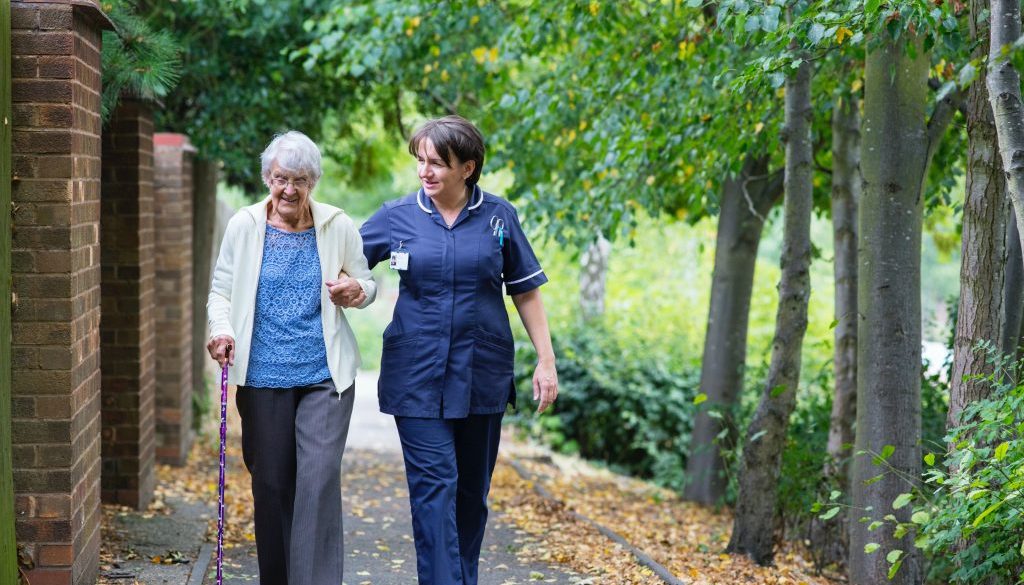Are There Exceptions to the Medicaid 5-Year Lookback Period?
We’ve been talking a lot recently about Medicaid-eligibility rules. They can be confusing, we know. One of the most critical pieces to understand, for anyone approaching Long-Term Care Medicaid, is its 5-year lookback period examining financial eligibility. They look at everything, and it certainly can seem overwhelming. But there are exceptions.
Medicaid is a government program, so naturally you can expect a mile of paperwork informed by miles more of red tape, financial disclosures dating back years and laws that make no sense at times. (Spoiler alert: that’s why we suggest hiring a professional to guide the process.)
That paper trail tells a story. Your story. And if you need to achieve eligibility for Long-Term Care Medicaid, it’s critical you get it right. At its core, eligibility is financial. You can’t have significant income and assets — or the state will declare you have the resources to pay for care yourself. A step further, Medicaid ensures you and your family have not artificially deflated your fiscal status within the last five years to become eligible.
But the system allows a few exceptions: meaningful expenditures, gifts, exchanges and transactions within the 5-year lookback.
3 Exceptions to the Medicaid 5-Year Lookback
Medicaid understands aging parents, grandparents and other loved ones would distribute wealth and assets in their Golden Years that they can’t use in death. Make no mistake, we would always advise planning early to ethically and responsibly spend down/distribute assets and property.
But there are exceptions. Some might call them loopholes. But they’re legally there for a reason, and great estate planning and life-care planning should factor these realities.
1. Married Couples with One Spouse Applying
Quite often, only one spouse applies for Medicaid. One may be in good health while the other must prepare for extra home-care services, adult day care/respite care, assisted living or full-time nursing care. The Community Spouse Resource Allowance (CSRA) allows the non-applicant spouse to retain much of the couple’s jointly owned assets.
Here in Florida, there is no penalty for interspousal transfers. The CSRA allows the non-applicant (known as a “community spouse”) to keep up to $130,380, while the applicant spouse may keep only $2,000. The thinking, easily enough, is that allowing such asset transfers (including non-residential property, stock portfolios and other investments, and cash savings) to a spouse will protect the applicant’s spouse and other dependent loved ones from having too little to cover living expenses.
So let’s break down some hypotheticals:
- If the couple together has $180,000 in net assets, the non-applicant spouse can keep $130,380 and the applicant may retain $2,000. The remaining $47,620 must be spent down or distributed within the rules.
- If the applicant spouse has $360,000 in cash savings alone, (s)he can transfer only $130,380 to the non-applicant and retain $2,000 within the 5-year lookback.
- If the couple has just $80,000 in net assets, the non-applicant spouse may retain all $80,000.
If any funds remain to be spent down within the Medicaid lookback period to reach eligibility, they may be used on eligible long-term care costs, no matter where care occurs. For instance, it may cover in-home care delivered by a medical professional or even a spouse, relative or close friend.
2. Home Transfer
A Medicaid applicant may transfer a home to:
- A legal spouse
- Children under 21 years old
- A blind and/or permanently disabled adult child
- A sibling of the homeowner who has resided in the home for at least a year before the Medicaid applicant transitioned to a long-term care facility
- An adult child of the applicant who has lived in the home for at least two years as a caregiver/care partner before the Medicaid applicant transitioned to a long-term care facility. (The provided care stipulation is key, as it must be reasonably proven that the son or daughter providing such care delayed the applicant need for formal long-term care.)
In each case, the property recipient would require proof of the status that would make them eligible to receive it.
3. Assets Distributed to Minor Children
Long-Term Care Medicaid applicants may have a minor child or children (under 21 years old) who live with a range of disabilities. These children would be eligible to receive asset transfers of any scale during the 5-year lookback period to benefit their own well-being. Common tactics include establishing trusts to temporarily transfer ownership of funds and assets until the beneficiaries reach adulthood.
Preparing for Medicaid in the Life Care Planning Process
Of course, the best bet is to have all financial planning and legal issues sorted out well before the lookback, if possible. The exceptions to this important eligibility rule do, however, account for unexpected illnesses and variables that should allow for transactions at any time.
We can’t stress this enough: you need a professional to help to build a solid plan. Caregiver Support & Resources, LLC works with elder-law attorneys, and we can legally and ethically protect people’s assets to help them qualify for Medicaid and VA attendance.
Medicaid, unlike Medicare, will cover most long-term care costs. Once we obtain Medicaid eligibility for an individual, if they remain within the Medicaid guidelines, they will have eligibility for the rest of their lives. Likewise for VA aid and attendance.
There’s no reason an elder or their spouse should live in poverty for transitioning to higher levels of care. Our clients, their families and future generations may still live in comfort and dignity.
(Editor’s Note: Caregiver Support and Resources, LLC is not a law office. Maureen Rulison is not an attorney. The information contained in this blog is not to be construed as legal counsel or advice or substituted as such in any U.S. state, territory, locale or foreign state where it can be accessed. Rather, this blog is meant only to educate elders, care partners and families as to legal processes around life care planning.)




